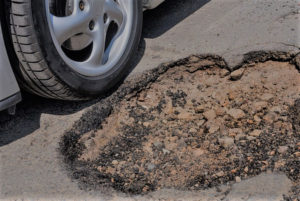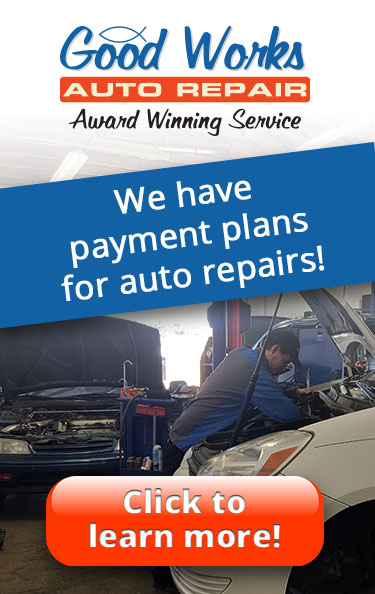 What do you get when you mix a lot of rain water, colder temperatures, traffic and a cracked section of asphalt? A recipe for disaster – potholes!
What do you get when you mix a lot of rain water, colder temperatures, traffic and a cracked section of asphalt? A recipe for disaster – potholes!
Often unavoidable, potholes can wreak havoc on car tires, wheels, alignment and suspension, causing drivers to spend millions of dollars every year to repair the damage.
The non-profit Car Care Council advises motorists to watch for these signs to help determine if hitting a pothole has damaged their vehicle:
Steering and suspension feel different
Does your steering seem to do its own thing and pull your vehicle to the left or right? Does it lean in a certain way? If so, this might be a sign that your car is attempting to compensate for an alignment problem caused by pothole damage to your struts. Loss of control, swaying when making routine turns, bottoming out on city streets, or bouncing excessively on rough roads are indicators that the steering and suspension may have been damaged. The steering and suspension determine a vehicle’s ride and handling. If anything seems off, trust your gut and have an auto repair technician examine your vehicle.
Low tire pressure or visible tire damage
While a flat tire may be a clear sign of pothole damage, impairment may not be as obvious. Is there a dent in your rim? Is there a bulge or blister on your tire sidewall that wasn’t there before? Do the tires show low tire pressure? These are all signs that there may be pothole damage, and you should have your tires checked by a certified technician as soon as possible.
Leaks under your car
If you see leaks coming from under your vehicle, it is possible that the undercarriage has been damaged. Hitting a pothole can dent or puncture the undercarriage of your ride, which can cause fluid leaks and rust formation in places you cannot see.
Avoiding pothole damage – your vehicle’s best bet
Want to avoid pothole problems entirely? Of course! The easy answer is to bypass them. Unfortunately, that’s easier said than done, since some potholes aren’t very visible, and others appear out of nowhere. Firestone Complete Auto Care gives these tips to help avoid pothole damage:
- Maintain your manufacturer’s recommended tire pressure since properly inflated tires provide the best buffer between broken, dipping pavement and your ride’s wheel rims. Avoid over or under-inflating your tires. Too-firm tires are as bad as too-soft ones when it comes to preventing pothole damage.
- Prevention is the best medicine. That’s why leaving enough space between you and the vehicle in front of you is key. That way, you’re more likely to spot potholes before they wreak havoc on your ride. Avoid broken pavement whenever it’s possible to do so.
- It’s tough to judge the depth and size of a pothole, or even see it at all, during damp or inclement weather. When driving in less-than-ideal conditions, proceed at a reduced speed. Extra caution may help you identify driving hazards, such as potholes, before they can cause damage to your vehicle.
If you suspect that your vehicle has been damaged by hitting potholes, schedule an appointment at your trusted auto repair shop for an inspection. Trained technicians can spot damage to your vehicle before it becomes a serious (and costly) problem.
Schedule My Appointment Now!
